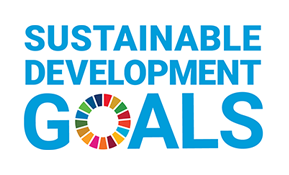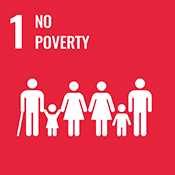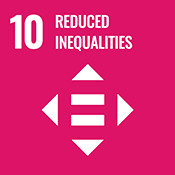2024 Reports 8 to 12 of the Auditor General of Canada to the Parliament of Canada
Report 11—Programs to Assist Seniors
At a Glance
Aging can bring new challenges, such as declining health, social isolation, and financial insecurity. In 2023, there were 7.5 million people over the age of 65 in Canada, a total that could almost double within 20 years.
In 2018, Employment and Social Development Canada was tasked with supporting the Minister of Seniors, whose responsibility is to help the federal government better understand seniors’ needs and ensure that programs and services are in place to meet those needs. Overall, the department did not have a fulsome picture of the issues faced by seniors or the programs that were in place across Canada to serve them. As a result, it did not know whether the federal programs in place were sufficient to support the current needs of seniors and whether they will be sufficient in the future.
The Old Age Security program, delivered by Employment and Social Development Canada, is meant to strengthen seniors’ income security. In 2020, the benefits payments and administrative costs to run the program totalled $60.6 billion. The payments and costs are projected to triple by 2045. This increase was projected not only because of the increasing number of seniors but also because of inflationary pressures. The department could not demonstrate how it determined the level of benefits paid to seniors under the program and whether they were sufficient to support seniors’ financial security. In addition, Old Age Security payments are regularly adjusted for inflation, using the Consumer Price Index. Working with Statistics Canada, efforts were made to determine whether a consumer price index for seniors was needed. The approach used by Employment and Social Development Canada did not provide a robust foundation to conclude that the general consumer price index remained an appropriate measure for seniors and was not sufficient to assess whether seniors face a higher level of inflation than Canadians in general.
Ultimately, without comprehensive data and strong analyses, Employment and Social Development Canada cannot ensure that programs for seniors are effectively meeting their social and economic needs.
Key facts and findings
- In 2023, Statistics Canada indicated that there were 7.5 million people in Canada aged 65 and older and that for the first time, there were more people in that age bracket than under age 18.
- Over 20 federal organizations provide programs, services, or initiatives that support seniors’ needs.
- Employment and Social Development Canada delivers the Old Age Security Program and the New Horizons for Seniors Program. The department did not know whether the objectives of these programs were being met.
- Under the New Horizons for Seniors Program, value-for-money concerns were noted in 44% of the projects that were funded from March 2022 to March 2024. Some projects were not completed by the recipients, while others had indicated that some funding had been used on ineligible activities.
- Information in the New Horizons for Seniors Program project files often did not allow Employment and Social Development Canada to determine how many seniors benefitted from the program.
Why we did this audit
- As they age, many seniors need support to overcome social, health, and economic challenges.
- Many federal organizations have a role to play in supporting seniors.
- Understanding the support that seniors need, today and in the future is critical to identifying whether the programs in place are addressing seniors’ needs and potential gaps in programs to do so.
Highlights of our recommendations
- For the Old Age Security program, Employment and Social Development Canada should, on a regular basis, conduct the policy analysis necessary to determine the level of financial support it should recommend providing to seniors through the program and determine whether it still meets the needs of seniors.
- Employment and Social Development Canada should take action to fulfill its responsibility to support the Minister of Seniors. This should include determining
- the work that it needs to do to collect and analyze, in a comprehensive way, information on the needs of seniors
- in collaboration with other federal departments and agencies, what programs are in place to meet seniors’ needs and identifying gaps in programs
- in collaboration with other federal departments and agencies, whether the suite of federal programs for seniors is working as intended
Please see the Link opens a PDF file in a new browser windowfull report to read our complete findings, analysis, recommendations and the audited organizations’ responses.



Under Canada’s Federal Implementation Plan for the 2030 Agenda, Employment and Social Development Canada is the federal lead responsible for facilitating coordination with other federal departments and agencies on the United Nations’ Sustainable Development Goal 1 (No Poverty) and Goal 10 (Reduced Inequalities). Additionally, in 2018, the department released Opportunity for All— Canada’s First Poverty Reduction Strategy, which recognizes the poverty-related vulnerabilities of some seniors.
Visit our Sustainable Development page to learn more about sustainable development and the Office of the Auditor General of CanadaOAG.
Exhibit highlights
Population of seniors (aged 65 and older) in Canada, actual and projected

Source: Based on data from Statistics Canada
Text version
This graph shows the actual and projected senior and non‑senior populations in Canada from 2016 to 2066 and the percentage of the overall population that seniors make up. The graph shows a growth of Canada’s senior population over the period as follows.
In 2016, Canada’s actual population was 35,151,730. The actual non‑senior population was 29,216,100 people. The actual senior population was 5,935,630 people, or 16.89% of the total population.
In 2021, Canada’s actual population was 36,991,980. The actual non‑senior population was 29,970,550 people. The actual senior population was 7,021,430 people, or 18.98% of the total population.
In 2026, Canada’s projected total population will be 41,171,200. The projected total non‑senior population will be 32,780,800 people. The projected senior population will be 8,390,400 people, or 20.38% of the total population.
In 2031, Canada’s projected total population will be 42,725,800. The projected total non‑senior population will be 33,073,000 people. The projected senior population will be 9,652,800 people, or 22.59% of the total population.
In 2036, Canada’s projected total population will be 44,228,500. The projected total non‑senior population will be 33,720,200 people. The projected senior population will be 10,508,300 people, or 23.76% of the total population.
In 2041, Canada’s projected total population will be 45,454,000. The projected total non‑senior population will be 34,327,800 people. The projected senior population will be 11,126,200 people, or 24.48% of the total population.
In 2046, Canada’s projected total population will be 46,412,800. The projected total non‑senior population will be 34,708,400 people. The projected senior population will be 11,704,400 people, or 25.22% of the total population.
In 2051, Canada’s projected total population will be 47,143,900. The projected total non‑senior population will be 34,797,600 people. The projected senior population will be 12,346,300 people, or 26.19% of the total population.
In 2056, Canada’s projected total population will be 47,766,000. The projected total non‑senior population will be 34,628,900 people. The projected senior population will be 13,137,100 people, or 27.50% of the total population.
In 2061, Canada’s projected total population will be 48,323,100. The projected total non‑senior population will be 34,228,200 people. The projected senior population will be 14,094,900 people, or 29.17% of the total population.
In 2066, Canada’s projected total population will be 48,846,800. The projected total non‑senior population will be 33,903,400 people. The projected senior population will be 14,943,400 people, or 30.59% of the total population.
Projected increase in Old Age Security expenditures

Source: Based on information from the Office of the Chief Actuary
Text version
This graph shows the actual and projected Old Age Security expenditures from 2015 to 2060. Expenditures include Old Age Security payments, the Guaranteed Income Supplement, the Allowance, and associated administrative costs. Payments to high-income beneficiaries are reduced each year, based on their actual income during the previous year. These reductions are not reflected in the projected expenditures shown. Total expenditures will be approximately 5% lower than depicted.
The graph shows an increase in expenditures over the period as follows:
- In 2015, the actual expenditure for Old Age Security was $47.1 billion.
- In 2020, the actual expenditure was $60.6 billion.
- In 2025, the expenditure is projected to be $88.0 billion.
- In 2030, it is projected to be $113.5 billion.
- In 2035, it is projected to be $136.6 billion.
- In 2040, it is projected to be $158.9 billion.
- In 2045, it is projected to be $181.2 billion.
- In 2050, it is projected to be $206.9 billion.
- In 2055, it is projected to be $237.7 billion.
- In 2060, it is projected to be $276.5 billion.
The categories included in the fixed basket of goods and services in the Consumer Price Index

Source: Based on information from Statistics Canada
Text version
The Consumer Price Index represents changes in prices experienced by Canadian consumers; in other words, it measures the rate of inflation. It does this by comparing over time the cost of a fixed basket of the same (or equivalent) goods and services typically purchased by households in Canada. The basket includes goods and services from 8 categories.
These categories are as follows:
- food, depicted by an illustration of baking supplies: a muffin tin, a liquid measuring cup, and a cardboard jug of milk
- shelter, depicted by an illustration of a teal two-storey house with a pink door
- household operations, furnishings, and equipment, depicted by an illustration of a grey tufted loveseat
- clothes and footwear, depicted by an illustration of a teal cardigan
- transportation, depicted by an illustration of a teal vintage Volkswagen Beetle–type car
- health and personal care, depicted by an illustration of rolls of small towels in front of a pump bottle and a capped bottle
- recreation, education, and reading, depicted by an illustration of two hands writing in a notebook
- alcohol, tobacco, and cannabis, depicted by an illustration of a bottle of wine beside a partially filled wine glass
Related information
Tabling date
- 2 December 2024
Related audits
- 2023 Reports 5 to 9 of the Auditor General of Canada to the Parliament of Canada
Report 8—The Benefits Delivery Modernization Programme - 2022 Reports of the Auditor General of Canada to the Parliament of Canada
Report 1—Access to Benefits for Hard-to-Reach Populations - 2019 Spring Reports of the Auditor General of Canada to the Parliament of Canada
Report 1—Call Centres

